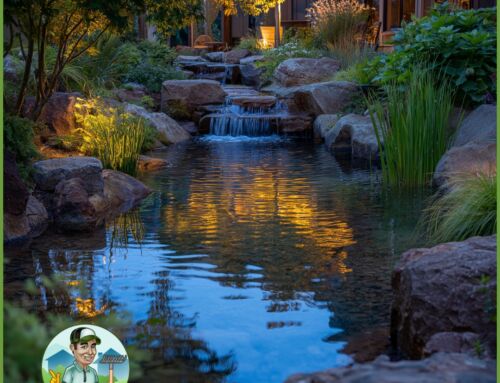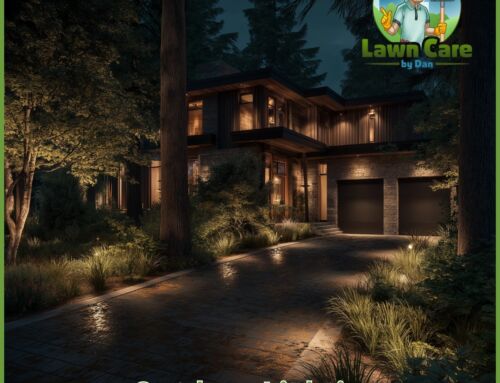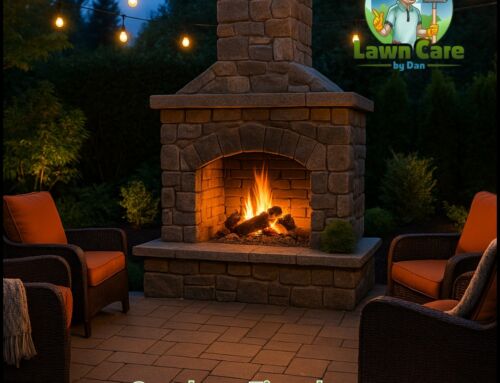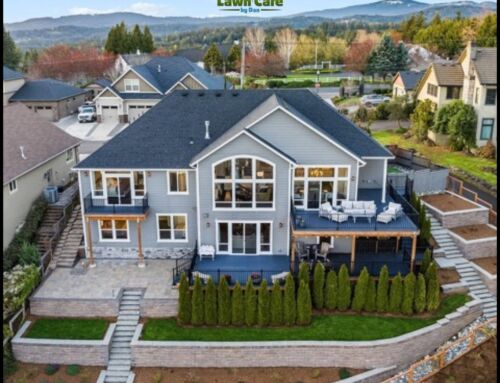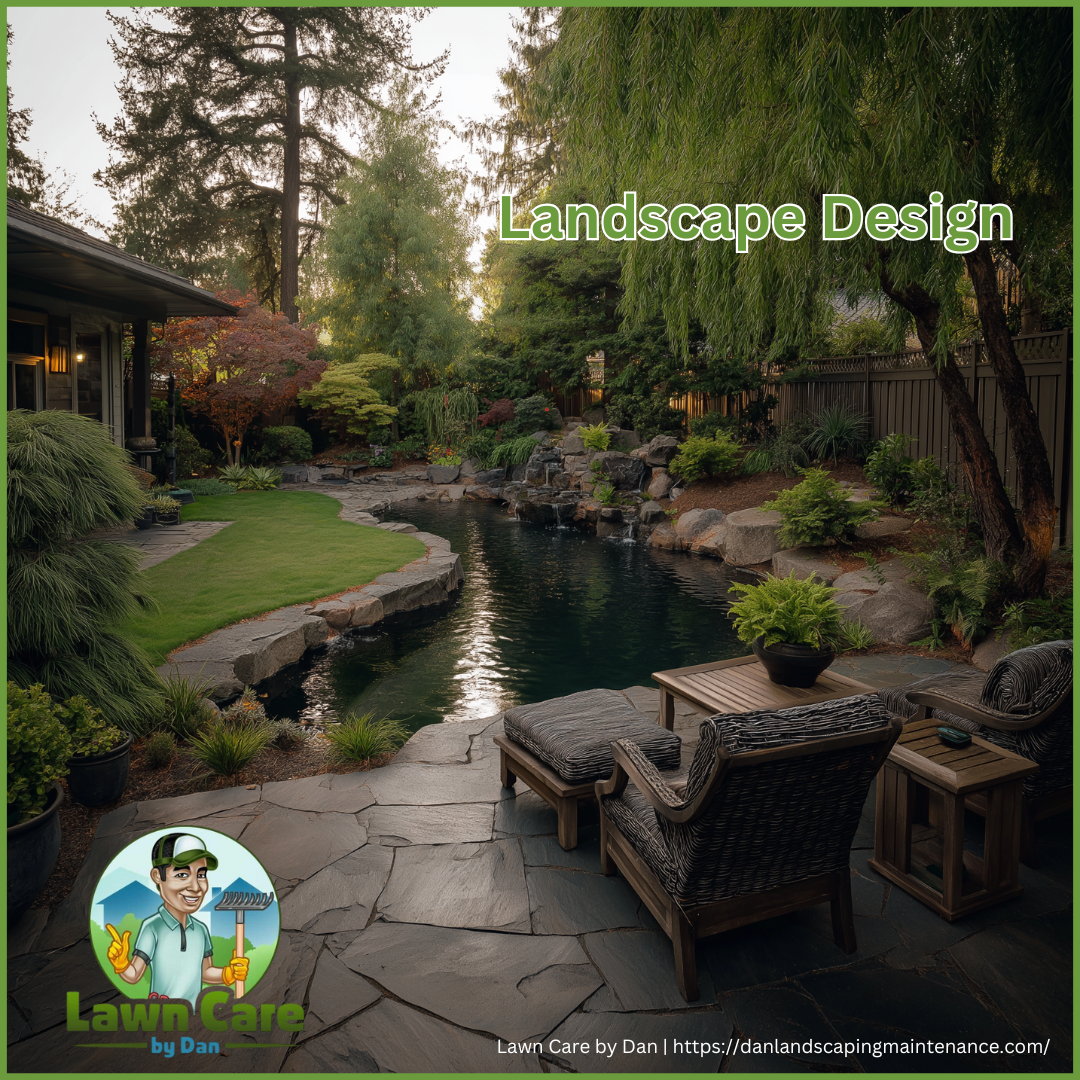
Understanding Landscape Design and Its Purpose
Landscape design shapes outdoor environments to achieve both beauty and usefulness. It combines planning, creativity, and environmental awareness. The process extends far beyond placing plants or building patios. Every design decision considers soil type, sunlight, and the way people move through the space. Well-designed landscapes create comfort, improve property value, and promote environmental health.
Essential Elements of Effective Landscape Design
Every successful outdoor plan rests on a few core design elements that work in harmony. Each one influences how people experience and move through the space, combining beauty with structure for a cohesive outdoor environment.
Line
Guides the eye and defines flow across pathways, beds, and borders. Horizontal lines create calm, while vertical ones draw attention and add height. Curved lines promote softness and natural movement. The way lines are arranged sets the tone, formal or relaxed, for the entire design.
Form
Shapes the structure of trees, shrubs, and built features. Rounded forms can make areas feel enclosed and cozy, while angular forms add modern appeal. Form influences mood and organization, helping establish balance between soft plantings and firm structures like walls or patios.
Color
Brings emotion and seasonal variety through plants and materials. Warm hues such as reds and yellows energize, while cool tones like blues and greens create serenity. Strategic use of color emphasizes focal points, defines zones, and ensures year-round appeal as plants change through the seasons.
Texture
Adds contrast and richness with smooth stone, rough bark, and soft foliage. Pairing different textures keeps the landscape visually interesting. Fine textures make spaces appear larger and more delicate, while coarse textures lend weight and strength. Mixing these textures adds depth and realism.
Scale
Maintains proportion so that every feature feels balanced and intentional. Proper scale ensures pathways aren’t too narrow, plants don’t overpower structures, and each component relates naturally to its surroundings. Achieving good scale allows outdoor spaces to feel comfortable, functional, and inviting.
Core Principles that Guide Outdoor Spaces
Design principles form the foundation of any great landscape. Unity brings the entire design together. Balance maintains visual stability, whether symmetrical or not. Contrast prevents dullness, while rhythm adds movement and continuity. Proportion ensures all features appear natural and well-fitted within their surroundings.
The Science Behind Serenity
Studies show that balanced designs can reduce stress levels. The human eye naturally prefers symmetry, which explains why well-planned gardens often feel calming before we even notice why.
How Landscape Designers Plan and Execute a Project
Professional design follows a clear process to ensure both creativity and precision. Each phase connects artistry with technical understanding, ensuring that every element supports the long-term vision for the space.
- Site Analysis: Evaluates topography, drainage, and existing features. Designers observe how sunlight moves across the area, note soil conditions, and identify opportunities or constraints such as slopes, trees, or existing structures. This step provides a foundation for all later decisions.
- Programming: Defines goals, budget, and lifestyle needs. It is the discovery phase where designers learn how the client uses the space—whether for entertaining, gardening, or relaxation. Priorities such as accessibility, sustainability, and maintenance preferences are established.
- Concept Design: Develops layout ideas and preliminary sketches that visualize possibilities. Designers test configurations for patios, pathways, and plant groupings, using mood boards or 3D renderings to communicate style and intent. Adjustments are made based on feedback before moving forward.
- Final Design: Finalizes plant lists, materials, and dimensions. Every choice, from stone type to irrigation method, is refined to achieve both function and harmony. Construction drawings and specifications are prepared to guide the build accurately.
- Implementation: Translates plans into reality through construction and planting. Designers may oversee installation, coordinating contractors and verifying details on-site. This stage blends artistry with craftsmanship, ensuring that the final space reflects the original design vision and thrives through time.
Different Types of Landscape Design
Design style depends on the space’s setting and purpose. Each category serves unique goals and challenges, influencing materials, layout, and maintenance approaches.
Residential Design
Focuses on comfort and family-friendly living spaces. These designs often include patios, play areas, and gardens that reflect personal style. Privacy and functionality are key, with fencing, shade trees, and pathways enhancing daily living. Water-efficient plants and low-maintenance lawns can reduce upkeep without sacrificing beauty.
Commercial Design
Improves curb appeal and creates welcoming business environments. Good design in commercial areas attracts clients, supports branding, and provides outdoor spaces for staff. Elements such as lighting, seating, and clear signage, combined with hardy, low-maintenance plants, help maintain a professional look. Sustainability is growing in importance, with green roofs, permeable pavements, and rain gardens becoming more common.
Public Design
Builds parks and community areas that encourage social connection. Public landscapes must balance beauty with durability and safety. Features like walking trails, open lawns, and shaded seating promote recreation and inclusivity. Designers often incorporate native plants to support biodiversity and reduce maintenance costs. These spaces strengthen community identity and offer shared enjoyment for generations.
Popular Landscape Styles for Modern Properties
Every property can reflect a different character through design style. Choosing the right approach defines how the space feels and functions, connecting architecture, lifestyle, and natural surroundings.
Formal Style
Relies on symmetry and order for timeless sophistication. Straight paths, clipped hedges, and geometric patterns create a sense of control and elegance. Formal gardens often feature stone fountains, sculpted shrubs, and centered focal points that mirror classical European traditions. They require consistent maintenance to preserve precision and visual harmony.
Informal Style
Follows natural curves and organic shapes for a relaxed, welcoming look. Plants are arranged in flowing groupings, creating a landscape that feels spontaneous rather than structured. Meandering paths and varied textures add depth and character. Informal landscapes often use native plants that adapt well to local conditions, reducing maintenance and supporting pollinators.
Asian Style
Emphasizes balance, water, and stone to evoke a sense of peace and reflection. Each element is carefully placed to represent harmony between nature and human design. Key features include koi ponds, bamboo, bridges, and stone lanterns. The goal is serenity; creating a space that encourages mindfulness and appreciation of subtle beauty. Lighting and gentle water movement enhance this tranquil experience.
Woodland Style
Uses native plants and natural layouts to create tranquil forest-like settings. This approach is ideal for shaded properties or those adjacent to woodlands. Paths wind softly through layered plantings of ferns, hostas, and native trees. Fallen logs, moss, and wildflowers add authenticity. The design encourages biodiversity and fosters a peaceful, secluded retreat.
Each approach brings a distinct mood, adapted to the environment and the owner’s vision. Combining styles can also work, blending structure with freedom—for example, a formal patio leading into a naturalized garden creates a seamless balance between elegance and relaxation.
The Importance of a Professional Landscape Designer
Behind every polished outdoor space stands a skilled designer. They combine plant science, construction knowledge, and artistry. Designers coordinate, budget, and communicate with contractors to ensure the finished result aligns with the client’s vision. Many professionals now integrate sustainable materials, smart irrigation, and low-maintenance plantings to meet modern expectations.
Expert Advice for Lasting Outdoor Success
Every property has unique traits. Soil type, sunlight, and water flow influence design choices. Selecting the right plants can reduce upkeep and ensure long-term beauty. Planning for every season keeps spaces appealing year-round. Consistent maintenance helps landscapes remain vibrant and functional for years to come.
Innovations Shaping the Future of Landscape Design
Today’s technology is changing how outdoor projects take shape. Designers use 3D models to preview ideas before construction begins. Sustainability also drives innovation. Rain gardens, permeable pavers, and reclaimed materials are now common features. Multifunctional hardscape elements, like walls that double as seating, make modern landscapes more adaptable and engaging.
Designing Outdoor Spaces That Stand the Test of Time
Landscape design continues to evolve, blending creativity with environmental care. With Lawn Care by Dan’s thoughtful expertise, homeowners and businesses can create outdoor spaces that balance style, function, and longevity. The art of hardscaping turns ordinary yards into lasting sanctuaries that future generations can enjoy.
Begin Your Outdoor Design Journey
From patios to plantings, every design tells a story. By working with professionals, you gain a deeper understanding of how thoughtful design can reshape outdoor living. Start planning a space that reflects your personality and endures through time.
Frequently Asked Questions
How does hardscaping improve landscape design?
Hardscaping adds structure, reduces erosion, and creates usable spaces such as patios, walkways, and retaining walls. It also complements plantings, creating a balance between soft and solid elements.
What materials are best for hardscaping?
Popular materials include natural stone, pavers, concrete, and wood. Each offers different textures, durability, and visual effects, depending on the overall design style.
Can sustainable practices be part of hardscaping?
Yes. Permeable pavers, recycled materials, and native plants support eco-friendly design. These options promote better drainage and reduce environmental impact.
How long does a professional landscape project take?
Project length varies by size and complexity. A small garden refresh may take weeks, while large installations can span several months.
Is maintenance required after installation?
Ongoing maintenance keeps your investment looking its best. Seasonal care, pruning, and cleaning help preserve structure and color throughout the year.

